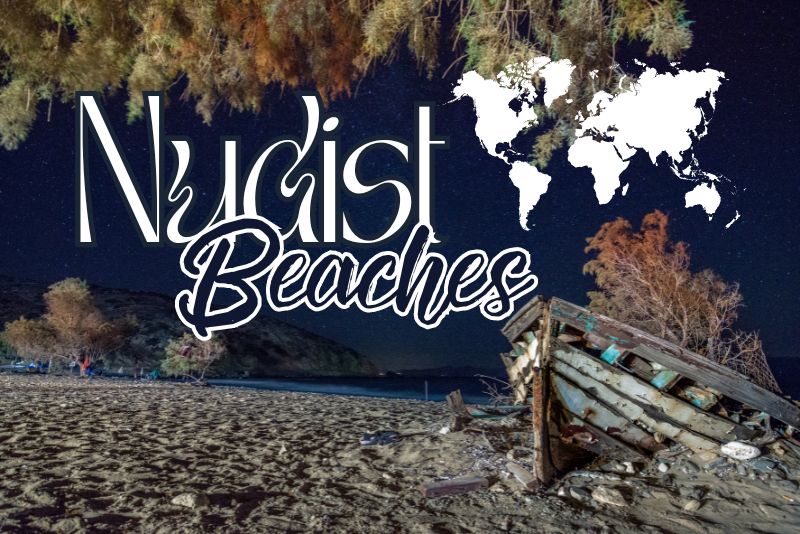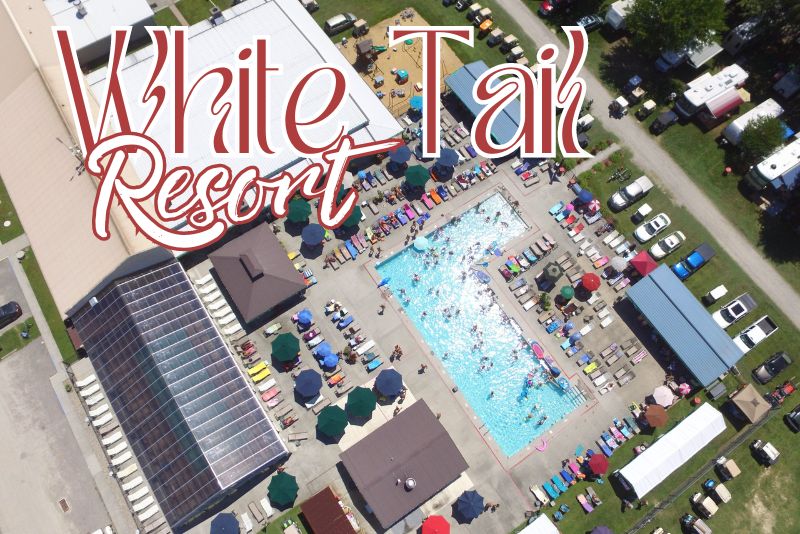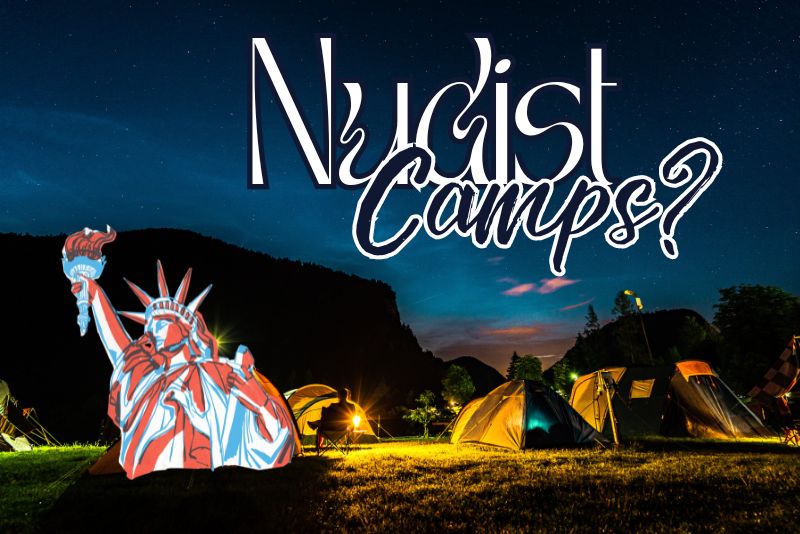Hi there! My name is Miranda Evans, my husband and I are nudists which is often something that is looked down upon, but I was raised in a family with a nudist lifestyle so I’m here to give my dear readers a different perspective on this widely misunderstood ideology.

Nudism as a concept has always existed. The first humans only used clothes as means of protection against the weather after all. Now we have homes that can help us stay cozy in any weather conditions so why not embrace that by being as free as we can be?
Nudism in modern society is frowned upon because it is usually assosiated with sex. This is a result of an oversexualised society. Nudists believe that being naked is a form of freedom and that it doesn’t have to be linked with sexuality at all. In fact, people who adopt this ideology tend to be less sex-crazed due to their open-mindedness.
Here’s my brief summary on the history of Nudism:
Ancient Civilizations & Nudity
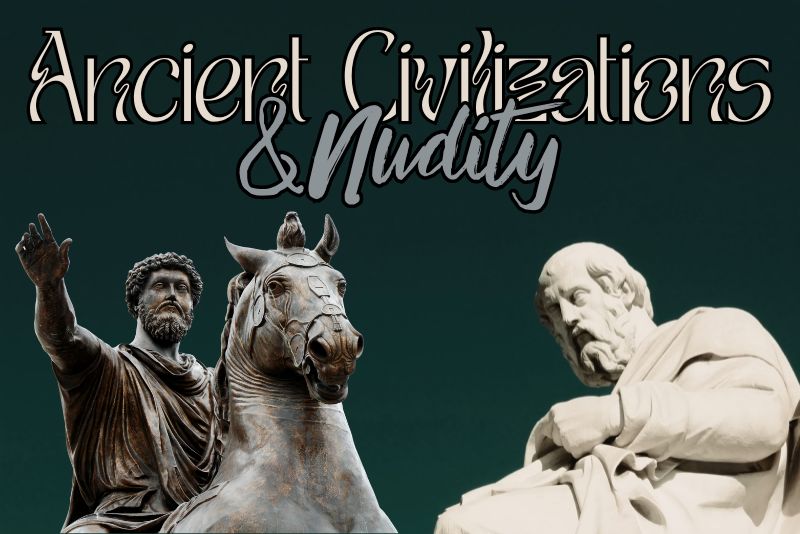
Before the modern era, many ancient civilizations practiced forms of nudity that we might consider proto-nudism today. Their relationships with the naked form varied based on beliefs, climate, and social structures.
While many ancient civilizations celebrated the human body in various forms, some practices, like the liberating act of skinny dipping, have their own unique histories and cultural implications.
Ancient Greece
Ancient Greeks held a profound appreciation for the human form, associating it with ideals of beauty, athleticism, and divinity. Athletes often competed naked, which was believed to encourage fairness and display physical prowess.
This form of public nudity wasn’t considered scandalous but rather a celebration of the human body’s strength and beauty. Many of the renowned sculptures from this period, like the statue of the “Discus Thrower,” showcase athletes in their naked glory, underlining the cultural acceptance of public nudity.
Moreover, Greek gyms, or “gymnasia,” etymologically tied to the word “gymnos,” meaning naked, were spaces where male participants trained without clothing.
Ancient Egypt
In the scorching climate of Ancient Egypt, clothing was minimalistic, especially among the lower classes. Children typically went about naked until puberty, while adults wore simple linen garments that were easy to remove.
Nudity was practical, allowing for better cooling in the hot environment. Frescoes from the era depict workers in various stages of undress, reflecting a society where nudity was commonplace and accepted. The elite, on the other hand, draped themselves in finer garments, not for modesty but to signify their elevated status.
Religion & Nudity
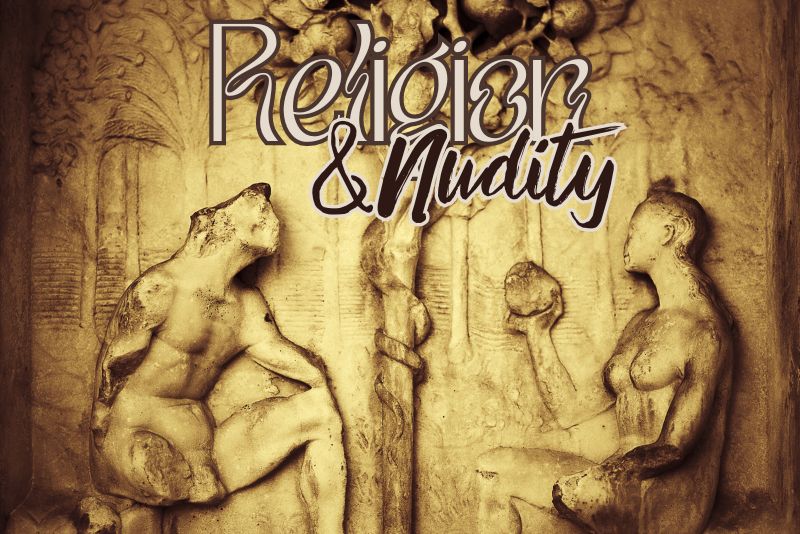
As organized religions began to play pivotal roles in societies, their doctrines and beliefs influenced perceptions of nudity. While some religions embraced it, others vehemently opposed it.
Christianity – Nudity as Shame
The Christian narrative of Adam and Eve, who, after committing the original sin, recognized their nakedness and felt shame, has profoundly influenced Western perceptions of nudity.
For many Christian denominations, nudity outside of certain contexts (like marriage) became associated with sin and immodesty. Medieval Christian societies, driven by the Church’s influence, largely viewed public nudity as unacceptable.
This perspective persisted through the Renaissance, despite the era’s famed nude artworks, which were often subject to controversy and censorship.
Hinduism – Spiritual Nudity
In contrast, certain sects within Hinduism view nudity differently. The Digambar, a sect of Jainism, believes that nudity is essential for spiritual growth. Their monks renounce all worldly possessions, including clothing, emphasizing detachment from the material world.
Similarly, certain Hindu sadhus practice asceticism and may live in a state of perpetual nudity, symbolizing their break from societal norms and material attachments. Festivals like the Kumbh Mela will often see such sadhus in their natural state, their nudity representing spiritual purity.
Modern Movement

The late 19th and early 20th centuries witnessed the emergence of nudism as a formalized movement, especially in Europe. This era saw nudism not merely as a return to nature but also as a pathway to improved health, community, and equality.
Birthplace of Organized Nudism
Germany is often credited as the birthplace of the organized nudist movement. In the early 1900s, “Freikörperkultur” (FKK), or “Free Body Culture,” emerged, promoting communal nudity as a means to connect with nature, achieve better health through sunbathing, and break down class barriers.
Early FKK clubs faced opposition, but the movement persisted. Post-WWI Germany, with its liberal Weimar Republic, saw a burgeoning nudist culture. However, the Nazi regime later imposed restrictions, associating public nudity with degeneracy.
America: Nudity and Counter-Culture
While nudism in the US began around the same time as in Europe, it really gained traction during the counter-culture movements of the 1960s. Communes that sprang up during this period often embraced social nudity, viewing it as a rejection of societal constraints.
By the late 20th century, nudist resorts and beaches began popping up across the country. Today, organizations like the American Association for Nude Recreation advocate for the rights of nudists and promote the lifestyle’s benefits, such as improved body image and stress reduction.
The Global Spread

While the nudist movement began primarily in Western countries, its principles resonated across the globe. Different regions adapted and interpreted nudity according to their unique cultural contexts.
Scandinavia and Sauna Culture
The Nordic countries have a longstanding tradition of communal nudity in saunas. This ritual, deeply embedded in their culture, is more about relaxation and bonding than any nudist ideology.
In these steam-filled rooms, nudity is seen as natural and unsexualized, fostering a sense of community among participants. While Scandinavia didn’t experience a nudist movement identical to Germany’s FKK, their sauna culture’s principles align with many nudist ideals, emphasizing authenticity, health, and community connection.
Japan and Onsen Tradition
Japan’s onsen (hot spring baths) culture is another instance of communal nudity, deeply rooted in tradition. These communal baths, often segregated by gender, provide spaces for relaxation, socialization, and even spiritual cleansing.
Though modern Japanese society is generally conservative regarding public nudity, the onsen remains a space where the human body is accepted in its most natural form. Like the Scandinavian sauna, the onsen ritual embodies many values central to nudism without being directly tied to the movement.
Influence of Media
As media grew in influence through the 20th century, it played a significant role in both promoting and stigmatizing nudity. The portrayal of nudism in films, television, and print media has shaped public perception in profound ways.
Nudity in Film
The silver screen’s relationship with nudity has been complex. Early films occasionally showcased non-sexual nudity, often in ‘exotic’ or ‘primitive’ contexts. However, with the Hays Code’s adoption in the 1930s, Hollywood imposed strict censorship, equating nudity with immorality.
The cultural revolutions of the 1960s and 70s challenged these taboos, with filmmakers increasingly presenting nudity in varied contexts. While often sexualized, some films began to depict communal nudity in ways that aligned with nudist principles, highlighting its innocence and liberation.
Print and Publications
From the mid-20th century onwards, several magazines dedicated to the nudist lifestyle emerged. Publications like “Sunshine & Health” and “Nude & Natural” provided nudists with platforms to share experiences, photographs, and news.
These magazines, while often facing censorship battles, played a crucial role in connecting and legitimizing the nudist community.
Present-Day Challenges and Acceptance

In the contemporary world, nudism finds itself at a crossroads. While many societies have become more accepting, nudists still face legal challenges, misconceptions, and the impact of the digital age.
Legal Battles and Nudist Rights
Many nudists today continue to fight for their right to practice social nudity. Legal challenges abound, particularly concerning nude beaches and public spaces.
While some regions have designated clothing-optional areas, in many places, public nudity remains illegal, often leading to clashes between nudists and authorities.
Organizations like the Naturist Action Committee work tirelessly to protect and advance the rights of nudists, pushing for legal reforms and challenging societal misconceptions.
Nudity in the Age of Social Media
The rise of social media has presented both opportunities and challenges for the nudist community. Platforms like Instagram and Facebook have strict policies against nudity, leading to the removal of non-sexual content and limiting nudists’ ability to share their lifestyle.
Despite that, the digital age has also brought nudist communities closer. Online forums, websites, and niche social networks allow for the sharing of experiences, advice, and events, ensuring that the spirit of the nudist movement remains strong in an ever-evolving world.




